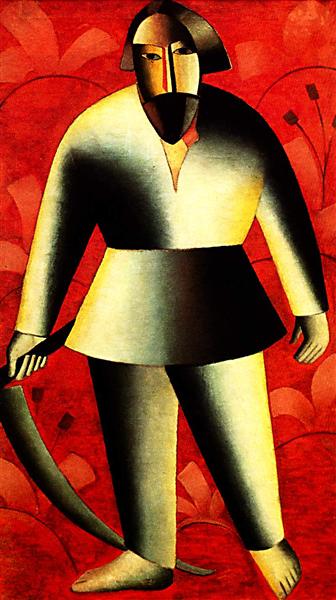
After Kazimir Malevich’s break with impressionism in 1912, more and more clear signs of cubism are found in his works. During this period, the artist writes a cycle of so-called peasant works, and it can undoubtedly be said that the entire peasant cycle, regardless of the date of writing, is his path to creating the picture “Peasant” (“Mowing Mower”). This painting is of exceptional importance to the history of art, which cannot be overestimated. The author himself hardly understood clearly the meaning of this work, which is an undoubted masterpiece of the transition period and to which he arrived intuitively.
In the figure of the peasant, frozen in tragic stupor, the totality of the sufferings and aspirations of the entire Russian peasantry is imprinted. Before us is not any specific person with his feelings, but the Russian peasant in general, with his pain and hope. Once, having abandoned ideological and religious goals in painting, the art of “writing ideas” and rushing into the “art of writing itself”, Malevich created a fundamentally new, incomparable image. The face of a peasant, solemnly standing against a flaming red background, surprisingly combines the canonical big-eyed and generalization of non-individual features.
Year of painting: 1912.
Dimensions of the painting: 66.5 x 113.5 cm.
Material: paper.
Writing technique: black watercolor, graphite pencil.
Genre: portrait.
Style: cubism.
Gallery: Nizhny Novgorod State Art Museum, Nizhny Novgorod, Russia.